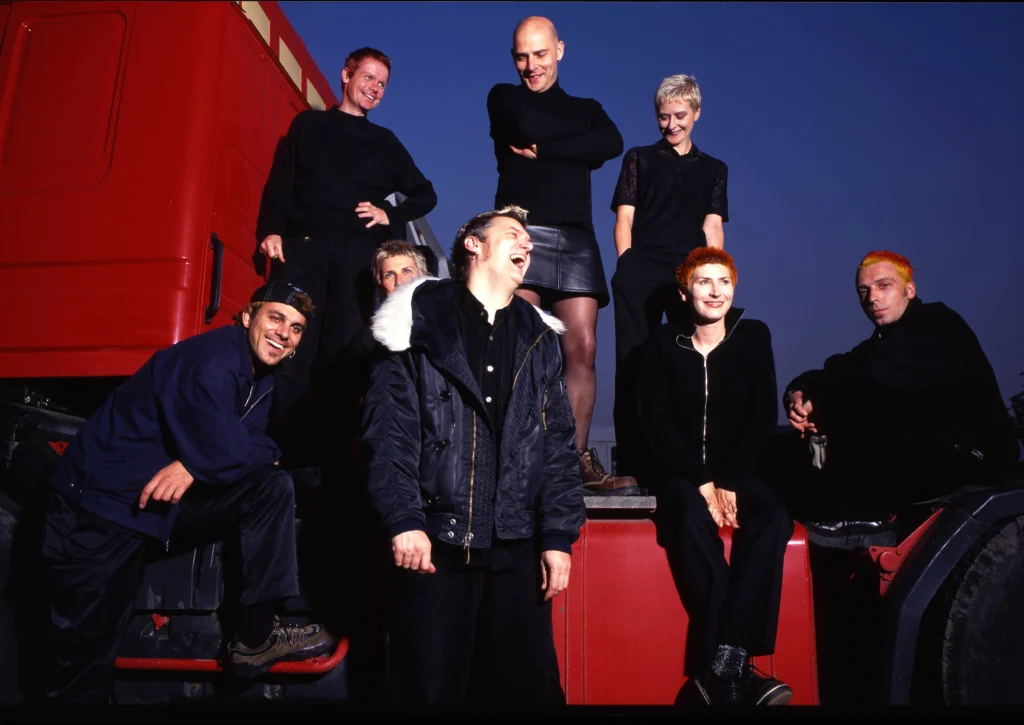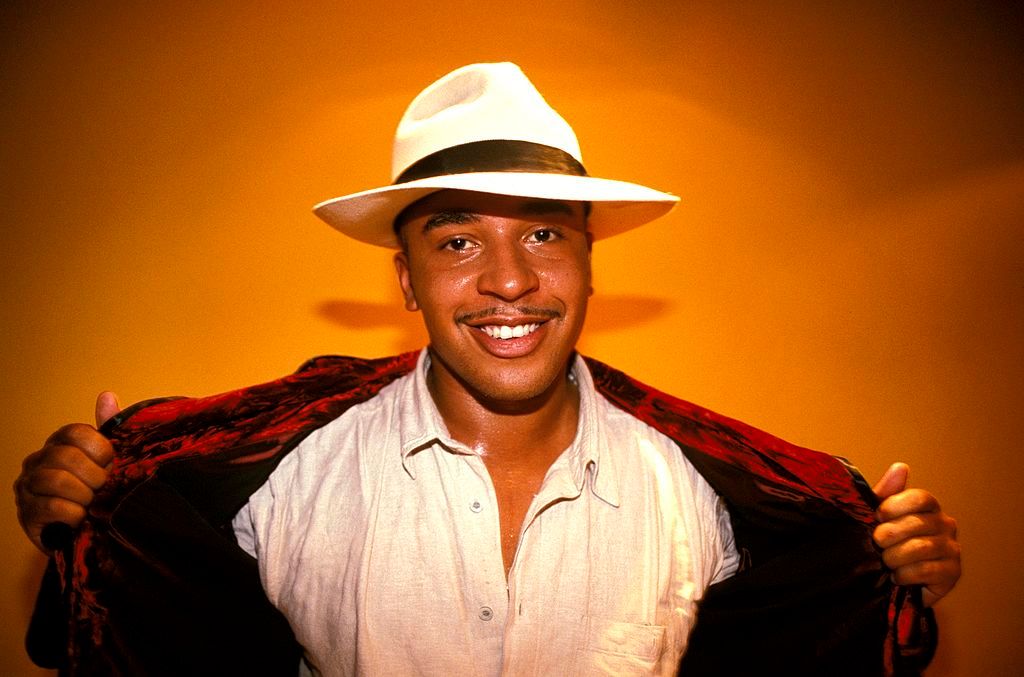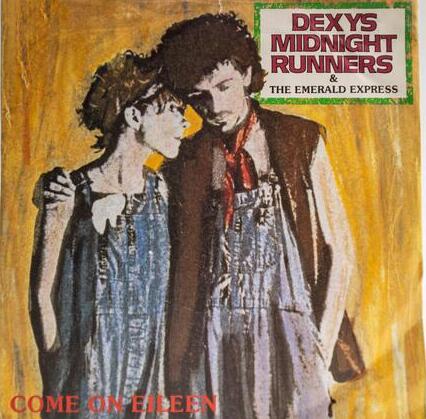1. Vanilla Ice – “Ice Ice Baby” (1990)

Vanilla Ice’s “Ice Ice Baby” (1990) was the first rap song to hit number one on the Billboard Hot 100 chart. This famous track represented a key moment for hip-hop, showing its appeal and marketability. The song’s success came mainly from its catchy tune, which used the famous bassline from “Under Pressure” by Queen and David Bowie.
- Mainstream Breakthrough:“Ice Ice Baby” broke ground by becoming the first rap song to top the Billboard charts, a feat that had previously been unheard of for the genre.
- Sampling Controversy:The song’s use of the “Under Pressure” bassline led to a legal battle and a settlement, with Queen and Bowie eventually receiving songwriting credits.
- Music Video:The music video, shot on the roof of a Dallas warehouse, featured Vanilla Ice rapping while dancing with others.
- Cultural Impact:“Ice Ice Baby” became a cultural phenomenon, with its catchy tune and dance moves becoming instantly recognizable.
- Criticism and Controversy:While the song was a commercial success, some critics and fans argued that it was a derivative piece, raising questions about originality and authenticity.
- Legacy:Despite its initial popularity, “Ice Ice Baby” is often viewed as a one-hit wonder, yet its legacy remains as the first rap song to reach the top of the Billboard charts, a testament to its groundbreaking moment in music history.
2. Los del Río – “Macarena” (1995)

The “Macarena” by Los del Río initially faded away shortly after its release in 1995, primarily because it was classified as a minor hit and did not achieve the level of widespread popularity that many anticipated. The song was somewhat overlooked in the music charts at the time, leaving it to languish in relative obscurity. However, everything changed dramatically in the summer of 1996, when a New York DJ began to play the infectious Spanish version at various events and parties. This sparked a dance craze that captivated audiences, leading to a revival of interest in the track, and came to be known as a global sensation that no one could ignore. The upbeat rhythm and catchy choreography allowed it to transcend cultural barriers and become a staple at celebrations around the world.
- Initial Release and Minor Success:“Macarena” was first released in Spain in 1993 and did well locally. In 1995, a remix version called “Macarena (Bayside Boys Remix)” was released but didn’t chart very well.
- DJ’s Role in the Rise:A New York DJ, Johnny, played the Spanish version of “Macarena” in a club, and everyone spontaneously started line dancing. He recognized the song’s potential and convinced a radio station to play it.
- The Dance Craze:The song’s infectious rhythm and simple dance moves, combined with the DJ’s promotion, led to a rapid spread of the dance craze.
- Music Video Impact:The official music video for the song, released in 1996, further contributed to the dance craze.
- Long-Term Impact:While “Macarena” is not a widely played song today, its impact as a cultural phenomenon and the lasting memory of the dance are significant.
3. Chumbawamba – “Tubthumping” (1997)

In 1997, Chumbawamba’s “Tubthumping” was inescapable. With its shout-along chorus—“I get knocked down, but I get up again!”—and its pounding energy, the song became a global sensation. It blasted from radios, stadiums, and TV ads, and quickly climbed charts around the world. But for a song that once seemed unstoppable, its presence today feels surprisingly… faded. So what happened?
For starters, Chumbawamba was never meant to be a pop band. Rooted in anarcho-punk and leftist politics, the group had spent years in the underground before accidentally crossing into the mainstream with “Tubthumping.” The song itself, often mistaken for a party anthem, was actually a critique of working-class resilience being co-opted by capitalism—a message lost on most of its audience.
Once the song’s moment passed, Chumbawamba didn’t chase another hit. Instead, they returned to more politically charged music and performance art, deliberately stepping back from commercial music. Without follow-up hits or ongoing media saturation, “Tubthumping” became a classic example of a one-hit wonder—a phrase that, fairly or not, often leads to fading cultural memory.
Finally, there’s the simple truth of time. Pop culture is always evolving. Music from the ’90s now competes with two decades of new sounds, and unless a song is tied to a broader cultural moment (like a movie, meme, or revival), it can slip into the background.
“Tubthumping” may not be everywhere now, but it hasn’t disappeared. It lives on as a time capsule of the late ’90s—raw, loud, defiant, and a little weird. Just like the band that made it.
4. Baha Men – “Who Let the Dogs Out” (2000)

In the summer of 2000, Baha Men’s “Who Let the Dogs Out” was a worldwide earworm. With its infectious chant, barking sound effects, and party vibe, the track became an instant hit—winning a Grammy and showing up in movies, sports arenas, and kids’ parties alike. But fast forward to today, and the song feels more like a meme than a memory. So, why did it fade?
The short answer: novelty doesn’t last. “Who Let the Dogs Out” was a quintessential novelty song—fun, catchy, and built around a gimmick. While that can spark huge attention in the short term, songs like these rarely have lasting cultural weight. Once the initial hype dies down, they often get shelved into the “remember this?” corner of nostalgia.
Another reason? Overexposure. The song was everywhere—from commercials to cartoons to sporting events. It became so overplayed that it burned out fast. What once felt fun and goofy quickly turned annoying for many, which sped up its cultural fade.
And like many novelty acts, Baha Men didn’t follow up with another big hit. Without continued presence in the mainstream, they were labeled a one-hit wonder—another artist tied to a very specific time and sound.
Still, “Who Let the Dogs Out” hasn’t vanished. It pops up now and then, mostly in a tongue-in-cheek, ironic way—whether in a nostalgic playlist or as a punchline in pop culture. It’s faded, yes, but not forgotten. Just waiting to be let out again… one more time.
5. Afroman – “Because I Got High” (2000)
Back in 2000, Afroman’s “Because I Got High” was the ultimate stoner anthem. With its laid-back beat, hilarious storytelling, and unapologetic chorus, the song struck a chord with listeners around the world. It went viral before viral was even a thing, riding the wave of early internet sharing and college radio buzz. But despite its massive popularity, the track feels like a hazy memory today. So… what happened?
First, the song was built almost entirely on a single joke—a guy keeps messing up his life, and his only excuse is, well, “because I got high.” It’s clever, but once you’ve heard the punchline a few times, the novelty wears off. Like many viral hits, its charm faded quickly.
Second, Afroman’s image was closely tied to weed culture, which was still considered fringe or controversial in 2000. While marijuana has become more accepted (and legalized) in many places since then, the song hasn’t really been embraced as part of that shift. It remains stuck in its era—more of a stoner stereotype than a timeless track.
And while Afroman did continue to release music, none of his follow-ups had the same breakout success. That led to the dreaded one-hit wonder label, which often comes with cultural fadeout—especially if there’s no reinvention or reintegration into the mainstream.
Finally, tastes have changed. The early 2000s were big on parody and novelty songs. Today’s music landscape is more fragmented, more polished, and often more personal. A goofy, weed-fueled confession track just doesn’t hit the same way in 2025 as it did in 2000.
Still, “Because I Got High” holds a spot in pop culture history. It’s the sound of a particular time, a particular vibe—and for a lot of people, it still brings a lazy smile. Faded? Sure. Forgotten? Not quite.
6. Lou Bega – “Mambo No. 5” (1999)

In 1999, Lou Bega’s “Mambo No. 5” was everywhere. With its irresistible brass riff, catchy roll call of women’s names, and throwback swing-meets-Latin-pop vibe, the song became an international sensation. You couldn’t turn on the radio, watch TV, or walk through a mall without hearing “a little bit of Monica in my life…” But today, the song feels like a distant echo. So why did “Mambo No. 5” fade?
For starters, the track was a novelty hit, even if a highly polished one. Based on a 1949 instrumental by Dámaso Pérez Prado, Bega added playful lyrics and a modern pop sheen—but the formula was built on nostalgia and gimmick. It was fun, yes, but not the kind of song designed for longevity.
Second, the song’s massive popularity also led to overexposure. It was in movies, commercials, school dances—even a kids’ version. When a song gets that big that fast, the cultural burnout comes quickly. People loved it… until they didn’t.
Then there’s the reality that Lou Bega didn’t have another hit on that level. Though he released other music, he couldn’t escape the shadow of “Mambo No. 5.” Once the novelty wore off, the spotlight moved on.
And finally, the late ’90s pop landscape was full of these quirky, genre-blending hits. Many of them—like this one—feel very tied to their moment. As music trends evolved, the mambo-pop fusion didn’t carry forward into the 2000s or beyond.
That said, “Mambo No. 5” hasn’t vanished. It pops up now and then in nostalgic playlists, retro parties, and the occasional meme. It’s faded, sure—but like all true novelty hits, it still knows how to crash the party when you least expect it.
7. Right Said Fred – “I’m Too Sexy” (1991)

When Right Said Fred released “I’m Too Sexy” in 1991, they delivered one of the most iconic and cheekiest tracks of the decade. With its strutting beat, minimalist hook, and deadpan delivery, it became an instant classic—part runway satire, part club banger, and all attitude. But for a song that strutted so confidently into the charts, why does it feel so far off the cultural radar now?
Well, first and foremost: it was novelty by design. The song was meant to poke fun at fashion industry egos and narcissism—“I’m too sexy for my shirt” is hilarious in its absurdity. But like many novelty songs, once the joke lands a few times, its shelf life begins to shorten. There’s only so much replay value in a punchline.
Second, Right Said Fred didn’t have another hit that resonated on the same level. Without follow-up songs to keep them in the public ear, the band quickly became defined by one track, a classic one-hit wonder scenario. That usually leads to a fast fade unless the song finds new life through reinvention or pop culture references.
Also, the early ‘90s had a lot of experimental pop hits. “I’m Too Sexy” fit into that quirky, genre-blending moment—just as dance music, euro-pop, and ironic detachment were hitting mainstream. As musical tastes moved into grunge, hip hop, and polished R&B later in the decade, songs like this started to feel out of place.
That said, the track hasn’t disappeared entirely. It still shows up in commercials, movies, and the occasional runway spoof. It was even sampled by Taylor Swift in her 2017 hit “Look What You Made Me Do,” giving it a brief second wind.
So yes—“I’m Too Sexy” may have faded from everyday playlists, but like any true fashion diva, it never truly disappears. It just waits for the right moment to make a sassy comeback.
8. Soft Cell – “Tainted Love” (1981)

When Soft Cell released “Tainted Love” in 1981, it was unlike anything else on the radio. With its cold synths, hypnotic beat, and Marc Almond’s haunting vocals, the song became a defining track of the new wave era. A cover of a 1964 soul song by Gloria Jones, Soft Cell’s version transformed it into something darker, moodier, and unmistakably ‘80s. It topped charts and became an international sensation. But in 2025, the song feels like a shadow—still respected, but rarely heard. So why has “Tainted Love” faded?
One reason is simple: it belongs so strongly to a specific musical moment. The early ’80s synth-pop sound was fresh and edgy at the time, but as pop music moved into the maximalism of late ’80s glam, the grit of ’90s grunge, and the polish of 2000s pop, songs like “Tainted Love” felt more and more like artifacts.
While the track has been hugely influential—covered, sampled, and referenced in dozens of songs—it’s rarely played in its original form outside of retro playlists. Its influence lives on, but its radio and cultural presence has shrunk. And unlike some ’80s hits that found second lives through TV, film, or memes, “Tainted Love” hasn’t had that kind of viral resurgence.
There’s also the fact that Soft Cell didn’t have a string of chart-topping hits to keep their name in constant rotation. While beloved in alternative circles, they never quite crossed into lasting mainstream fame, and “Tainted Love” ended up standing alone, casting a long shadow but not enough to anchor a legacy in the general pop consciousness.
Still, the song isn’t forgotten. It’s a classic in goth clubs, synthwave playlists, and among music lovers who crave something with a bit of bite and melancholy. It may have faded from the mainstream, but like all good darkwave, it thrives in the shadows.
9. Dexys Midnight Runners – “Come On Eileen” (1982)

When Dexys Midnight Runners released “Come On Eileen” in 1982, it was an undeniable pop phenomenon. With its infectious fiddle, catchy rhythm, and rousing chorus, the song became an anthem of the early ‘80s, topping charts in multiple countries and becoming a beloved staple of many a dance floor. But despite its widespread popularity, today the track feels more like a nostalgic memory than a regular part of mainstream playlists. So why did “Come On Eileen” fade?
First, its sound was very tied to a particular time. The song blended pop with Celtic folk influences, which made it stand out in the early ‘80s music scene. But as musical trends shifted in the years that followed—moving from the eclecticism of the early ‘80s into the sleek pop of the mid-to-late ‘80s and beyond—this hybrid style didn’t quite retain the same appeal. The charm of “Come On Eileen” was rooted in its moment, and once that moment passed, it felt less fresh.
Another reason for its fade is that Dexys Midnight Runners didn’t maintain lasting mainstream success. While the band’s one-hit wonder status doesn’t diminish the iconic nature of “Come On Eileen,” it means the song’s cultural relevance was tied to the group itself, and once they didn’t follow up with another smash hit, the song became the band’s sole defining moment.
Plus, musical tastes evolved, and while “Come On Eileen” had a unique sound at the time, it didn’t fit into the future pop landscapes that followed. From the rise of the new wave and synth-pop to the dominance of grunge and hip-hop in the ‘90s, the song’s brass-and-fiddle vibe made it feel less contemporary as the years passed.
That said, “Come On Eileen” isn’t entirely forgotten. It’s still a beloved classic, often heard at weddings, parties, and retro events. It remains an anthem of joyful nostalgia, even if it’s no longer as omnipresent as it once was. It may have faded from constant airplay, but it will always hold a place in pop culture history.
10. Eiffel 65 – “Blue (Da Ba Dee)” (1999)

When Eiffel 65’s “Blue (Da Ba Dee)” hit the charts in 1999, it was a global phenomenon. With its catchy, robotic vocals, futuristic vibe, and infectious chorus, the song became a hallmark of late ’90s Euro-dance. It was everywhere—from clubs to commercials to cartoons. But in 2025, the song feels more like a fun throwback than a contemporary hit. So why has “Blue (Da Ba Dee)” faded from the forefront of pop culture?
One reason is simply that the song was very of its time. The late ’90s were a period of exploding Euro-dance, with a flood of similar-sounding tracks—techno beats, robotic lyrics, and colorful, high-energy visuals. “Blue” stood out in the moment, but as music trends shifted in the early 2000s toward pop-punk, R&B, and mainstream hip-hop, that style became less dominant. Songs that had a distinct “late-’90s” sound, like “Blue,” became less relevant as new genres took over.
Additionally, the song’s novelty factor played a big role in its rise and eventual fade. The repeated, almost nonsensical “da ba dee” chorus became iconic for a while, but novelty songs often don’t have the same long-term appeal as more complex or timeless tracks. Once the gimmick wore off, “Blue” struggled to stay in heavy rotation.
Another factor is that Eiffel 65 didn’t sustain their success. While “Blue” was a massive international hit, the group didn’t replicate that success with future songs. Like many one-hit wonders, their lack of follow-up hits meant they couldn’t keep their name in the public eye, which led to the fading of the song over time.
Despite this, “Blue (Da Ba Dee)” remains a nostalgic gem from the late ’90s. It occasionally resurfaces on throwback playlists or at retro-themed parties, still bringing back memories of its brief reign. Though its presence in mainstream media has diminished, its infectious hook and colorful sound continue to evoke the energy of an era.
11. Gotye – “Somebody That I Used to Know” (2011)

In 2011, Gotye’s “Somebody That I Used to Know” was everywhere. The haunting melody, minimalist production, and raw emotional lyrics made it an instant hit. It topped charts around the world and became an anthem for heartbreak. Yet, as quickly as it rose to prominence, it seems to have faded from the cultural landscape. So, why has “Somebody That I Used to Know” lost its place in the spotlight?
One reason is that the song’s popularity was largely tied to its novelty. The melancholic tone and stripped-down instrumentation, combined with Kimbra’s haunting feature, felt fresh at the time. It was a stark contrast to the polished pop and EDM-driven tracks dominating the charts. However, once the emotional intensity wore off, the song started to feel like a time capsule of 2011—distinct but no longer aligned with evolving pop trends.
Moreover, the overexposure factor played a significant role in its fading. The song was everywhere—on the radio, in commercials, movies, and even viral memes. It quickly became the soundtrack to countless personal moments, but as with many mega-hits, the repetition led to a sense of exhaustion. Once the song’s emotional punch was dulled by constant play, its cultural impact started to wane.
Additionally, Gotye himself didn’t follow up with another hit of the same magnitude. Without continued visibility and music to match, he became more of a one-hit wonder than a long-term staple in the pop scene. The track became his defining moment, but it also boxed him in as an artist known for a singular sound, further contributing to its fade.
Despite its decline in mainstream presence, “Somebody That I Used to Know” hasn’t disappeared completely. It still makes appearances in nostalgic playlists, covers, and even some occasional emotional moments, serving as a reminder of a bygone era of indie-pop crossover success. While its mainstream dominance has faded, the song still lingers as a snapshot of 2011’s musical landscape.
12. Toni Basil – “Mickey” (1981)

In 1981, Toni Basil’s “Mickey” was an unstoppable force. With its infectious chorus—“Oh Mickey, you’re so fine!”—and high-energy cheerleader persona, the song quickly became a pop anthem. It was fun, it was catchy, and it was everywhere. But despite its massive popularity at the time, the song has largely faded from the cultural spotlight. So, why did “Mickey” lose its staying power?
First, “Mickey” was a novelty hit, and like many songs in this category, its charm was built on a gimmick. The combination of Basil’s playful vocal delivery and the catchy chant made the track an instant earworm, but novelty songs often struggle with longevity. Once the initial fun wore off, the song had little to offer in terms of deeper substance, making it more of a fleeting moment than a timeless classic.
Second, the song’s popularity was tied to a specific era. The early ’80s were filled with new wave and pop hits, many of which had a similarly fun, quirky feel. But as musical tastes shifted—especially with the rise of more sophisticated pop, R&B, and rock styles in the mid-80s—the bubbly, cheerleader-inspired energy of “Mickey” started to feel more like a product of its time rather than a timeless tune.
Additionally, Toni Basil didn’t have another major hit to keep her name in the public eye. While “Mickey” was a global success, she struggled to replicate that success with subsequent releases. This made her more of a one-hit wonder, which often leads to fading once the initial cultural moment passes.
Still, “Mickey” isn’t completely forgotten. It remains a beloved throwback, often played at retro-themed parties, sports events, and nostalgia-driven playlists. While its mainstream dominance has waned, the song still holds a special place in pop history, reminding us of a carefree, high-energy era in music.